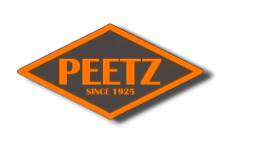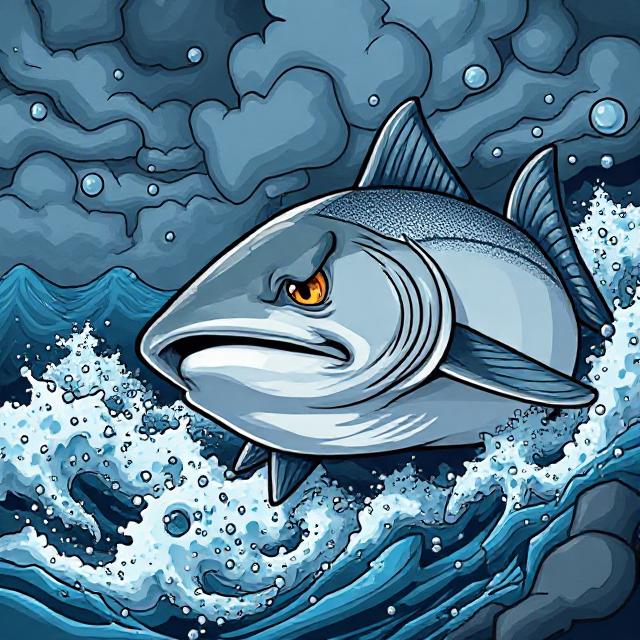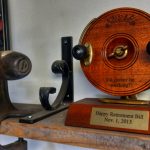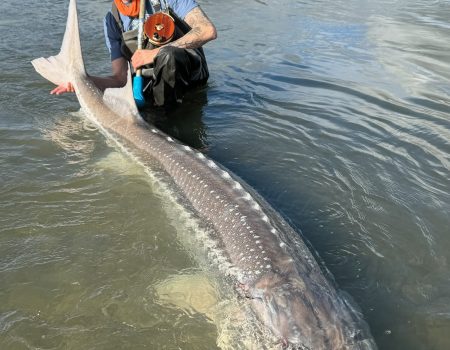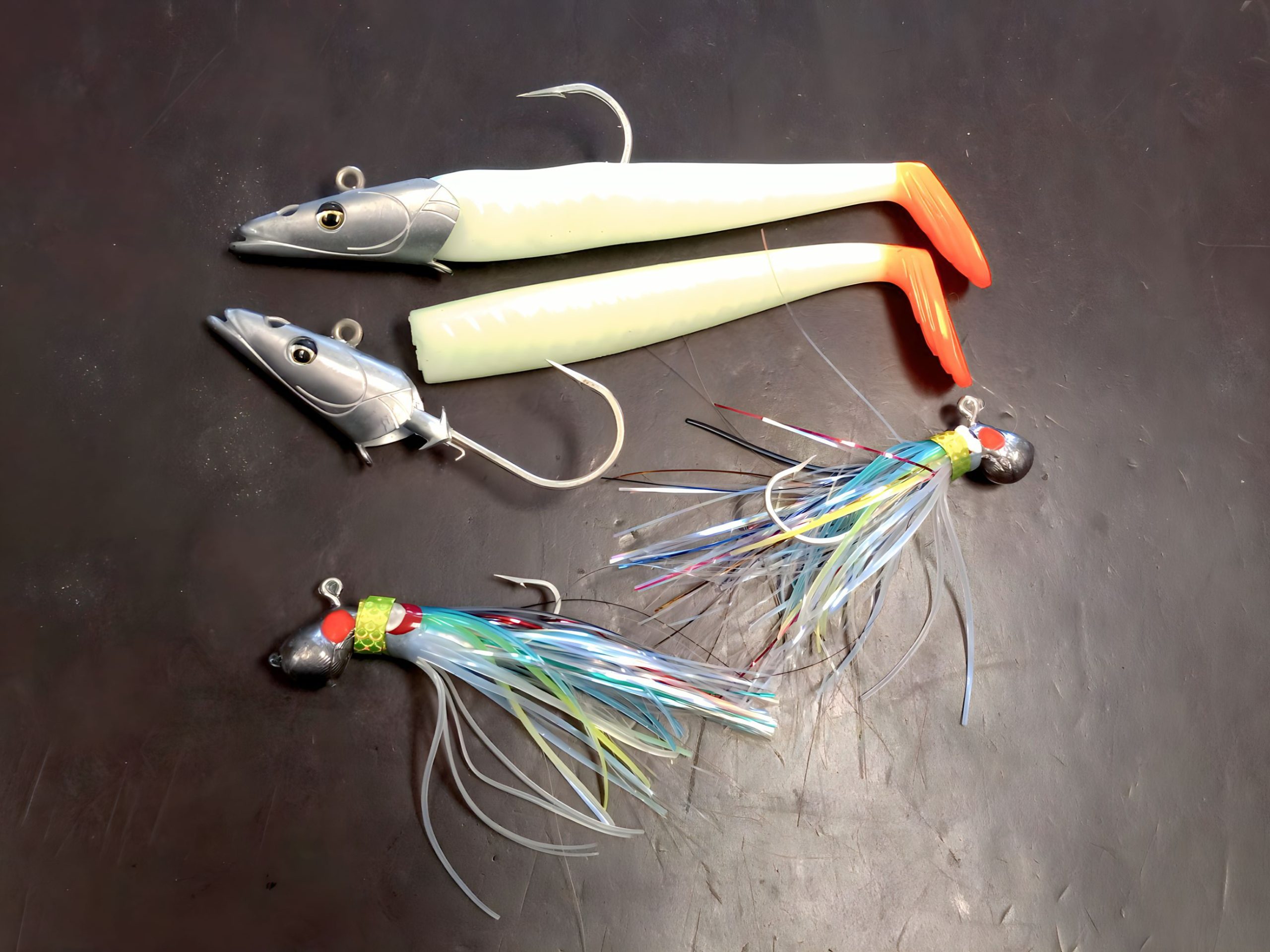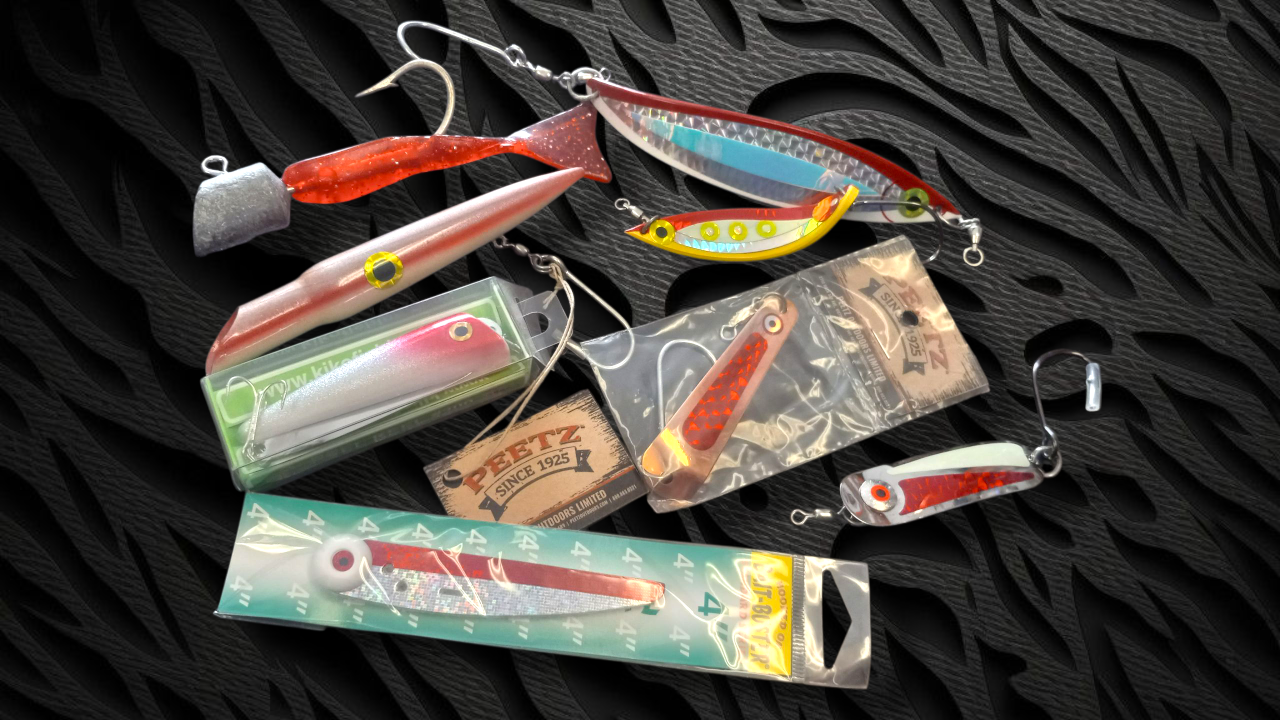South Vancouver Island Anglers Coalition
Listen in to this Deep Drive:
This email is in direct response to DFO’s proposed 2026 Chinook Salmon restrictions / measures in support of the Southern Resident Killer Whales.
South Vancouver Island Anglers Coalition- Response to DFO’s proposed Chinook salmon restrictions and the future of the Southern Residents
SVIAC is deeply concerned about the implications of the proposed DFO restrictions on Chinook salmon for the recovery of the Southern Resident Killer Whale (SRKW) population. We believe any policy addressing Chinook — the primary prey of these whales — must account for a full review of inter-related factors. The SRKWs face multiple, compounding threats that demand urgent and comprehensive action.
Key factors affecting SRKW foraging and survival
1. Historic removals for captivity
During the 1960s and early 1970s, many orcas from the Pacific Northwest were captured and sold to aquariums worldwide. Between 1962 and 1973, at least 263 killer whales were captured or killed in British Columbia and Washington. The SRKW “capture era” removed roughly 48 individuals from the SRKW population alone. These removals greatly reduced the population size, disrupted the SRKW social structure and weakened their long-term resilience.
2. Inbreeding and reduced reproductive success
A 2023 study found that inbreeding depression is now measurable in the SRKW population – more inbred females had lower lifetime reproductive output (e.g. ~1.6 calves vs ~2.6 for less-inbred) and shorter lifespans. Only 20-25 of the ~73 individuals are breeding. The small population and family-based social structure means that inbreeding may be limiting their recovery, even if other conditions improve.
3. Contaminants, toxins and microplastics
The SRKW accumulate high levels of persistent organic pollutants (e.g., PCBs) and emerging contaminants, especially in females and calves due to blubber mobilization during food scarcity.
Microplastics have also been documented in the SRKW’s environment, with modelling indicating overlap of microplastic accumulation in high-use SRKW areas. These toxins have been identified as a key impact on immune and reproductive systems and can reduce the survival of calves.
4. The Growth of Pinniped Populations and Impacts on Chinook and SRKW Recovery
Over the past 20 years, the populations of harbour seals and California and Steller sea lions along the British Columbia coast and throughout the Salish Sea have increased dramatically. BC’s harbour seal population has now rebounded to over 100,000 individuals coast-wide — up from roughly 10,000–12,000 in the 1970s. In the Salish Sea, numbers have grown more than ten-fold since the early 1980s.
California and Steller sea lions are now year-round residents in coastal and inland waters, with California sea lions in the Strait of Georgia increasing sharply since the early 2000s, notably at Cowichan Bay, Race Rocks, Sooke Basin and other sites. Steller sea lion populations along BC’s coast are now estimated above 40,000, also up significantly.
Recent studies have estimated that pinnipeds in the Salish Sea consume 5 to 6 times more Chinook salmon than are caught by all commercial, recreational, and First Nations fisheries combined.
5. Underwater noise and vessel disturbances
Underwater acoustic disturbance from large deep draft ships, including cruise ships, ferries, freighters and tankers in the Salish Sea, is now recognized as a major hindrance to SRKW foraging. Over the past year, over 4800 large deep draft ships transited the Juan de Fuca Strait, as reported by WCMRC at the Beecher Bay Spill Response Centre.
Research shows that this large deep draft vessel noise disrupts the SRKW echolocation and communication, reducing SRKW prey-capture success.
6. Alaskan and Alaska hatchery/ocean-ranching impacts
Chinook salmon stocks returning to British Columbia and the Salish Sea are also influenced by broader ocean and marine phase processes. Chinook in Alaskan waters are declining in both size and age at maturity.
The hatchery and ocean-ranching programs in Asia and Alaska (for pink and chum salmon) have been shown to alter the marine food-web competition, reducing size and survival of Chinook. Increased pink salmon from hatcheries compete for zooplankton and squid – resources also needed by Chinook – and have been correlated with decreasing size and abundance of Chinook. This means that even when Chinook are present in the Salish Sea, their size, condition and numbers are diminished, making them less desirable prey for the SRKW.
7. Alaskan Commercial Fisheries / By-catch and incidental removals
Trawler by-catch and incidental removals of Chinook salmon in commercial fisheries in Alaska further reduce available Chinook for both humans and SRKW. While recreational fisheries often receive the most public attention, multiple studies show the BC recreational sector takes only a small percentage of the total Chinook exploitation relative to commercial and other impacts.
8. Prey availability: Chinook salmon supply
With the exception of the endangered Upper Fraser Chinook 5-2 and 4-2 stocks of concern, the remaining Chinook stocks on the Fraser River have been at or above average seasonal returns. A recent UBC study (Andrew Trites) found that Chinook salmon were twice as prevalent in the hot-spot feeding areas of SRKWs compared to those of Northern Resident Killer Whales.
The study provided valuable insights into Chinook salmon distribution in the Salish Sea and challenged assumptions about prey availability for SRKWs. It also underscored the complexity of the factors influencing SRKW populations and the need for comprehensive approaches to their conservation.
Positive Contributions of U.S. Hatcheries to Chinook in the Salish Sea
In addition to highlighting pressures on Chinook salmon, it is important to acknowledge the role that U.S. hatchery programs play in supporting Chinook abundance in the Salish Sea:
Many U.S. hatcheries, particularly those along the Columbia River and Puget Sound, produce millions of juvenile Chinook annually that migrate through the Salish Sea. In recent years, these hatcheries increased their Chinook production in an effort to directly supplement SRKW foraging.
It is important to note that U.S. hatcheries tag and monitor 100% of their hatchery released Chinook, providing valuable data on migration patterns, survival, and predation risk, which helps inform management of both Chinook populations and SRKW recovery strategies.
While hatchery programs are not a complete solution and cannot replace healthy wild Chinook populations, they provide a significant positive contribution to Chinook abundance in the Salish Sea and therefore support SRKW foraging opportunities. Hatchery-origin fish can help mitigate short-term prey shortages and stabilize population trends while broader ecosystem recovery measures are implemented.
SRKW sightings in the Juan de Fuca & Georgia Straits — April to September 2025
Sightings and tracking data show that SRKW did not maintain steady, repeated foraging in the Salish Sea through April–August 2025 in the way they did in some earlier years. Their intermittent presence means that the SRKW may have been moving to other areas where preferred prey was more reliably available.
Because SRKW foraging success depends not only on local Chinook abundance but also on whale movement patterns, Chinook run timing, prey size/quality and disturbance/noise levels. Limited sightings and tracking cannot prove that the whales were—or were not—suffering from prey shortages across the entire population.
The mixed Chinook stock status and the patchy sightings together argue for a nuanced, stock-specific and season-specific assessment rather than a single, blanket solution.
Impact of Recreational Fishing on SRKW Foraging
Recreational anglers have long been part of the coastal fabric of Vancouver Island and the Salish Sea, yet their impact on the Southern Resident Killer Whales’ ability to forage for Chinook salmon remains minimal compared to other pressures.
Recreational fisheries are highly regulated in SRKW critical habitat zones and voluntarily comply with marine mammal avoidance protocols. Angling closures or voluntary avoidance zones have already been implemented in key foraging corridors such as Swiftsure Bank, the Juan de Fuca Strait, Boundary Pass, and the southern Gulf Islands during peak whale-use periods. As a result, the overlap between active fishing and SRKW presence is very limited — both in time and space.
Of note, modern recreational vessels produce far less underwater noise than large deep draft vessels. With reduced cruising speeds and updated noise-reduction technology, their contribution to the overall acoustic environment is negligible, and does not impact the SRKW foraging patterns.
Food competition: Because the recreational catch is so small relative to the total Chinook population — and minuscule compared with losses from pinniped predation or foreign interceptions — recreational anglers do not meaningfully reduce the Chinook biomass available to SRKW.
The recreational fishing sector has been a consistent partner in habitat restoration, hatchery support, and stock enhancement efforts aimed at increasing Chinook abundance. Many angling organizations invest directly in stewardship projects that benefit both Chinook salmon and SRKW.
Given the relatively small scale of harvest, the limited overlap with SRKW feeding activity, and ongoing compliance with closures and voluntary avoidance protocols, there is no scientific evidence that recreational fishing materially impedes SRKW foraging success.
What this means for the SRKW prey-availability argument
There is significant evidence that some Chinook stocks available in the Salish Sea and Juan de Fuca region were very strong in summer 2024 and parts of 2025, which locally increased Chinook foraging opportunities for whales using those areas.
The 2024–2025 data suggests that SRKWs had access to substantial Chinook biomass in multiple parts of their traditional foraging range. Yet, in spite of Chinook abundance, SRKW presence and foraging in the Salish Sea remained irregular and brief during the same period. This decoupling between prey abundance and whale distribution implies that other limiting factors—such as large vessel noise, competition with pinnipeds, or learned foraging shifts—may be more significant constraints than simple prey density.
Socio-economic impacts for South Vancouver Island residents
A further closure or major restrictions on Chinook fishing would affect more than just harvest numbers, impacting people, businesses, and communities across South Vancouver Island. SVIAC urges DFO to consider these effects prior to any new restrictions.
Potential impacts include:
1. Loss of livelihoods and income — Commercial fishers, licence holders, and seafood processors that rely on Chinook and related fisheries face reduced income or job loss.
2. Charter, guide and tourism businesses — Sport fishing charters, guides and associated tourism services (lodging, fuel, gear suppliers) rely on Chinook-based tourism during key seasons.
3. Small business and supply-chain effects — Restaurants, bait & tackle shops, truckers and cold-storage operators will see reduced revenue / closure.
4. Community socioeconomic health — Job losses and reduced seasonal work increase financial stress, which can exacerbate mental-health challenges, reduce community resilience and increase demand for social supports.
5. Equity concerns — Small independent fishers, seasonal workers, and remote-community households (including many Indigenous households) are likely to bear a disproportionate burden compared with larger corporate operators.
6. Perception & compliance — If the public perceives that closures disproportionately target recreational fishers while larger drivers of Chinook stock decline are unaddressed, goodwill may erode.
DFO Chinook restrictions must be part of a more holistic strategy
DFO’s policy for Chinook stability / recovery, for the past 20+ years, has been primarily focused on harvest reduction for the recreational fishery, without significant, measurable impact on the SRKW population. Given the above, SVIAC urges that any DFO policy restricting Chinook salmon must not treat the SRKW issue solely as a fish-stock harvest management problem. Instead, it must recognize that the SRKW’s survival hinges on the intersection of multiple threats.
In addition, any new DFO policy decision on this issue, must take into account the socio-economic impact on the communities in the affected areas of South Vancouver Island.
We therefore ask:
1. That DFO suspend the current consultation regarding proposed new restrictions on Chinook salmon that will further adversely impact the recreational fishery and communities on South Vancouver Island.
2. That DFO commence a new consultation with all relevant stakeholders in support of the SRKW recovery to include detailed analysis of ALL of the factors impacting the potential recovery of the SRKW.
3. That DFO develop explicit measures (including Mass Marking of Chinook) to better track and manage the biomass and quality of Chinook – not just limit harvest.
4. That DFO coordinate with U.S. agencies (e.g., NOAA) and Alaska authorities to address marine-phase competition, hatchery impacts, ocean-food-web competition and by-catch of Chinook.
5. That ocean-noise and large vessel regulation in SRKW core foraging areas be strengthened concurrently with any further Chinook restrictions.
6. That pinniped predation and competition be evaluated in the context of Chinook availability for SRKW, and considered as part of an ecosystem-based marine mammal management policy.
7. That monitoring of SRKW reproductive rates, calf survival, genetic health, toxin burdens and foraging success be incorporated into the policy evaluation.
8. That DFO develop and implement monitoring and measurement systems to accurately measure the effect and impact of any new policy decisions and future Chinook restrictions.
9. That DFO investigate options to increase Chinook production to supplement the SRKW foraging in strategic locations within the SRKW foraging area. Options should include expanding existing hatchery facilities, implementing new hatcheries, and implementing sea pen projects to outplant additional Chinook smolts to increase Chinook abundance.
In Summary
SVIAC understands and agrees that the SRKW population is facing a critical juncture, and without meaningful and multi-faceted action, we risk watching this iconic population decline further.
SVIAC stands strongly in support of urgent, scientifically-based, and coordinated measures to manage Chinook salmon stocks, and give the Southern Resident Killer Whales every chance of recovery — while also protecting the livelihood and survival of Vancouver Island communities.
We strongly urge DFO to commence direct engagement with Indigenous groups, non-governmental organizations, community leaders, fisheries managers, scientists and other key fishery stakeholders in a collaborative SRKW Recovery Roundtable process, to design a path forward that reflects the complexity of this issue.
The health of the Salish Sea ecosystem — and of the Southern Resident Killer Whales, themselves — depends on it.
Bill Campbell
President, South Vancouver Island Anglers Coalition
bill@sviac.ca
